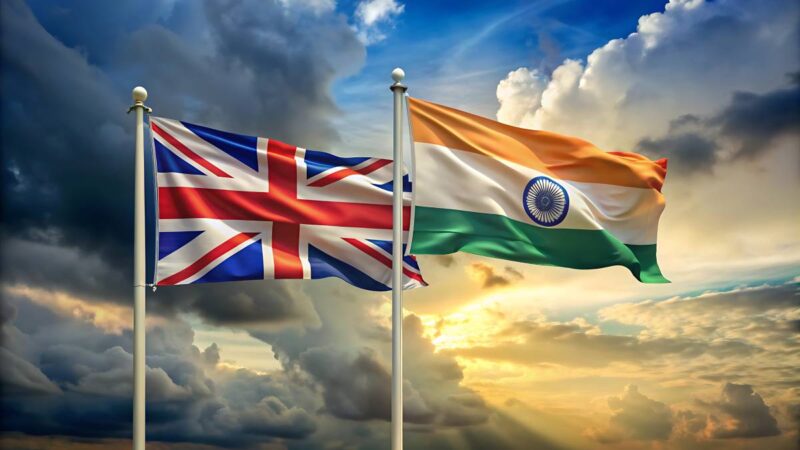The newly concluded Free Trade Agreement (FTA) between the United Kingdom and India is expected to impact trade in the gem and jewellery sector, with potential effects for manufacturers, exporters, and retailers in both countries. According to the Gem & Jewellery Export Promotion Council (GJEPC), the deal could see India’s jewellery exports to the UK double to $1 billion within a year of implementation, with broader bilateral trade in the sector projected to reach $7 billion in the coming years.
A Framework for Growth
The FTA is part of a wider comprehensive strategic partnership between the UK and India, aimed at enhancing cooperation across trade, investment, and services. It has been endorsed by both Prime Ministers—Rishi Sunak in the UK and Narendra Modi in India—as part of broader efforts to strengthen bilateral economic relations.
Jewellery is a key component of India’s exports to the UK, accounting for approximately $941 million in 2024. India also imports raw materials such as gold, silver, and platinum from the UK, valued at around $2.7 billion. The new trade agreement aims to reduce tariffs and simplify market access for businesses involved in jewellery manufacturing, export, and supply.
Sabyasachi Ray, Executive Director of GJEPC, commented on the trade structure:
“India imports $2.6 billion of say, gold, silver, platinum, and we export around $941 million, around a billion dollars, of jewellery and the molten silver and gemstone and finished diamonds. If you look at this sector, we import the raw materials and we export the finished goods. So that way this India-UK FTA will go a long way into seeing that we get a very good foothold into the UK market.”
Tariff Reductions and Market Impact
A key element of the FTA is the reduction of import duties on Indian jewellery entering the UK. While duty cuts are expected to range between 2% and 4%, even marginal changes may influence pricing and market positioning.
“In jewellery, 2% is huge so that way it will have a price advantage,” said Ray, referring to the price sensitivity of jewellery products in international markets.
Currently, Indian jewellery represents approximately 15% of the UK’s $3 billion annual jewellery import market. With the FTA in place, the GJEPC expects exports to increase substantially, estimating a rise to $2.5 billion over the next two years.
Effects for Industry Stakeholders
The agreement may affect jewellers, manufacturers, and suppliers in both countries, particularly in areas such as pricing and sourcing. Indian businesses could benefit from increased demand for finished goods in the UK market, driven by improved price competitiveness and streamlined regulatory processes. UK-based retailers may see increased availability of Indian-manufactured goods under revised terms, while UK suppliers of raw materials could experience higher demand from Indian buyers.
Kirit Bhansali, Chairman of the GJEPC, said:
“This agreement will open up fresh opportunities for growth, investment, and collaboration, strengthening the trade between the two nations.”
In addition to supporting export growth, the deal could facilitate more efficient sourcing of raw materials. India imports a significant share of its silver from the UK, and if preferential terms are applied to these imports, it may enhance trade flows in both directions.
Industry Considerations
For jewellery businesses in both the UK and India, the FTA may alter existing trade procedures and supply chain arrangements. Businesses should prepare for changes in pricing, documentation, and sourcing strategies as the agreement takes effect.
The agreement may also influence how brands position themselves within the UK market, with Indian exporters potentially increasing their presence and market share. Meanwhile, UK retailers and distributors will need to assess how best to integrate a growing volume of Indian products into their offerings.
Details around implementation timelines and specific tariff structures are expected to follow, and businesses in both countries are advised to stay informed and prepare accordingly.
Once implemented, the FTA may mark a notable change in jewellery trade between the UK and India, with implications for trade flows and supply chain planning.



